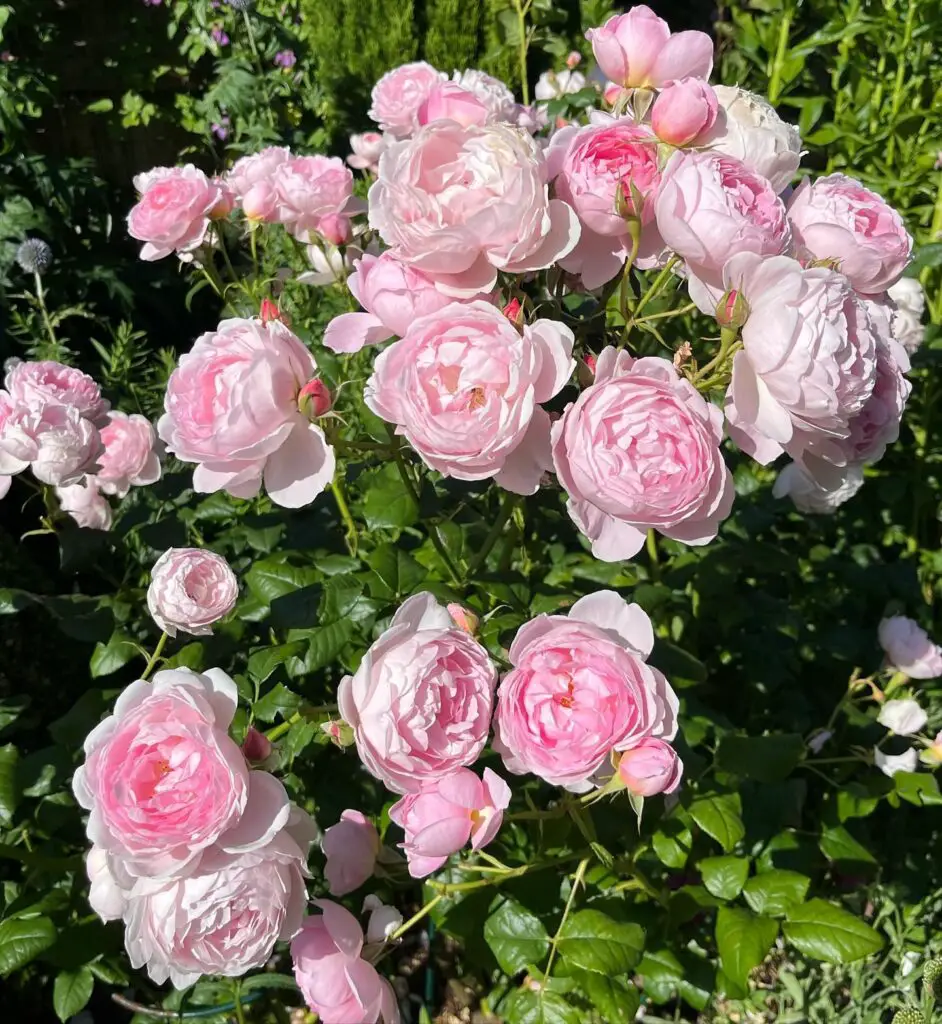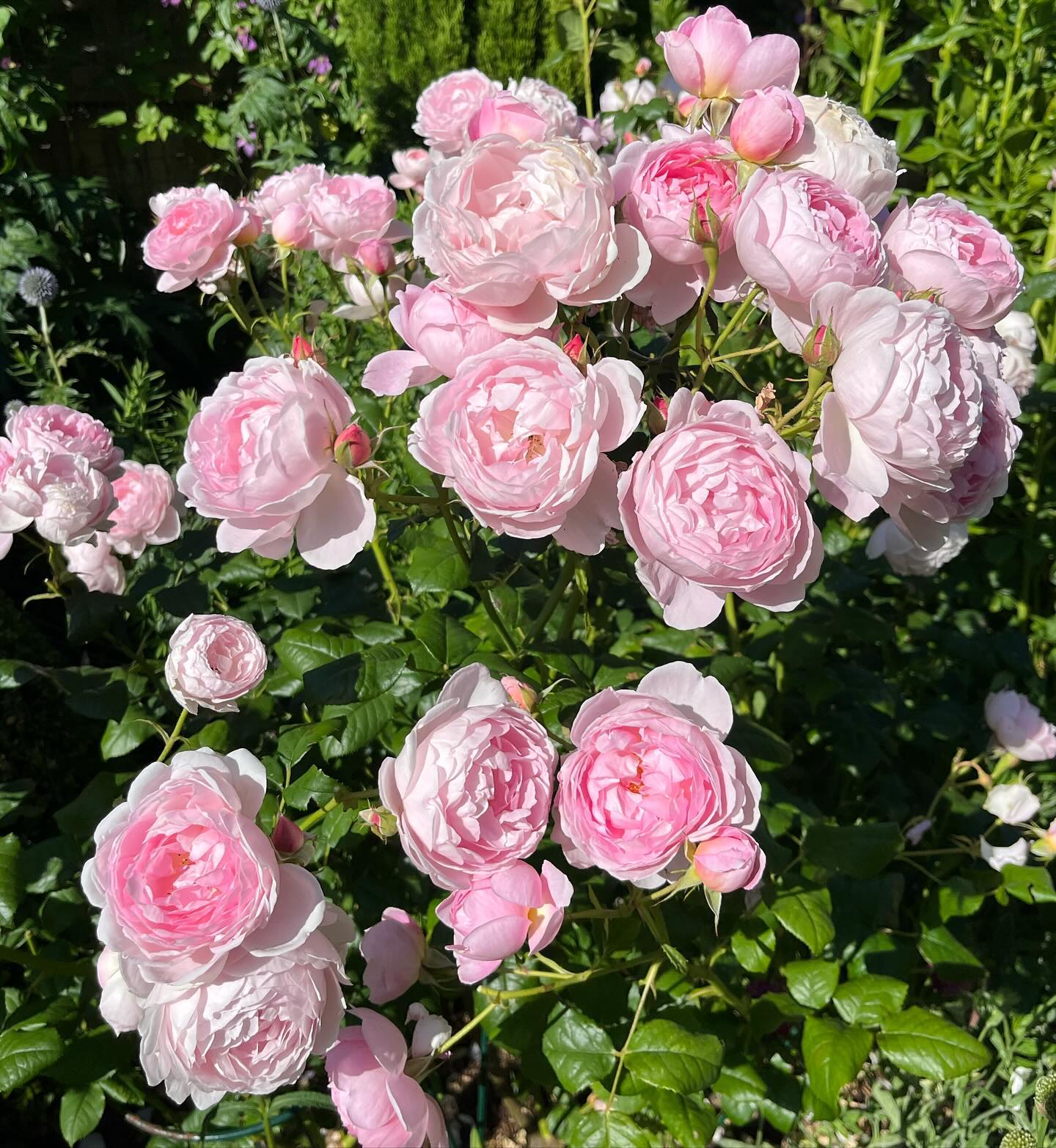Roses are often hailed as the queen of flowers, their vibrant colors and enchanting fragrance making them a favorite among gardeners and flower enthusiasts alike. But how does one truly master the art of cultivating these stunning blooms? In this guide, “How to Grow The Best Rose Flowers,” we delve into the secrets and techniques that will transform your garden into a breathtaking rose paradise.
Whether you’re a seasoned gardener or a curious beginner, our comprehensive tips and expert advice will help you nurture the healthiest, most beautiful roses. Join us as we explore the essentials of soil preparation, watering, pruning, and pest control, ensuring that your roses thrive and become the envy of every garden lover.
How to Grow The Best Rose Flowers: 8 Best Ways!
We’ll discuss the topic step by step. So, bear with us, and let’s dive into it:

Selecting Harmonious Rose Varieties
Choosing compatible roses ensures a harmonious garden. Start by considering your climate; some roses thrive in specific conditions.
Next, focus on disease resistance. Opt for varieties known for their resilience to common rose ailments.
Consider the growth habit. Climbers, shrubs, and groundcovers each have unique needs and appearances.
Pair roses with similar bloom times. This ensures continuous color and fragrance throughout the season.
Factor in size compatibility. Avoid overcrowding by selecting roses that fit well within your garden space.
Finally, harmonize colors. Choose shades that complement each other, creating a visually appealing display.
Enhancing Soil Profile for Optimal Rose Growth
A thriving rose garden begins with healthy soil. Improving the soil profile is crucial to ensure your roses get the nutrients and support they need. Here’s how you can enhance your soil for the best rose flowers.
Assess Your Soil
Start by testing your soil’s pH and nutrient levels. Roses prefer slightly acidic soil with a pH between 6.0 and 6.5. Soil tests will help you understand any deficiencies or imbalances, allowing you to amend the soil appropriately.
Incorporate Organic Matter
Organic matter, such as compost or well-rotted manure, is essential for enriching the soil. It improves soil structure, enhances drainage, and increases nutrient content. Aim to mix a 2-3 inch layer of organic matter into the top 12 inches of soil.
Ensure Proper Drainage
Roses require well-drained soil to prevent root rot. If your soil has poor drainage, consider creating raised beds or incorporating sand and organic matter to improve it. Proper drainage ensures roots receive adequate oxygen and prevents waterlogging.
Balance Nutrients
Roses need a balanced diet of nitrogen, phosphorus, and potassium. Adding a slow-release fertilizer or a balanced rose feed can provide these essential nutrients. Regularly monitor and adjust fertilization based on your soil tests and plant health.
Mulching
Mulching with organic materials like bark chips or straw helps retain soil moisture, regulate temperature, and suppress weeds. Apply a 2-3 inch layer around the base of your roses, ensuring not to cover the stems.
Regular Monitoring and Maintenance
Keep an eye on your soil’s condition throughout the growing season. Regularly add organic matter, adjust pH levels, and replenish mulch. Consistent care will maintain an optimal soil profile, leading to robust and beautiful rose blooms.
Combine Roses with a Diverse Mix of Plants
Enhance the allure of your garden by artfully blending roses with a diverse array of companion plants. Strategic companion planting not only enhances aesthetic appeal but also promotes healthier roses. Select plants that complement roses’ growth patterns and soil requirements.
For instance, interplant low-growing herbs like lavender or thyme to act as natural mulch, reducing weeds and conserving moisture. Alternatively, consider tall, graceful perennials such as delphiniums or salvias to provide structural support and contrast. This symbiotic approach not only maximizes space but also attracts beneficial insects, fostering a balanced ecosystem that deters pests and diseases.

Experiment with textures, colors, and bloom times to create a harmonious tapestry that evolves throughout the seasons. By combining roses with a diverse mix of plants, you can elevate your garden into a dynamic landscape that celebrates nature’s diversity while showcasing the splendor of your prized roses.
Prune the Right Way, at the Right Time
Proper pruning is crucial for the health and vitality of your rose bushes. Begin by selecting sharp, clean pruning shears to make clean cuts, reducing the risk of disease. Aim to prune during late winter or early spring when the plant is dormant, signaling the ideal time for shaping and rejuvenating growth. Remove dead, damaged, or crossing branches first to improve air circulation and prevent disease.
Next, focus on shaping the bush by cutting just above outward-facing buds, encouraging outward growth and a balanced appearance. Maintain a vase-like structure to allow sunlight to penetrate and reach inner branches, promoting robust flowering. Avoid cutting too close to buds, as this can stunt new growth. Lastly, throughout the growing season, prune spent blooms promptly to redirect the plant’s energy into producing new flowers.
Following these simple yet essential pruning practices ensures your roses not only bloom abundantly but also remain healthy and resilient against common pests and diseases.

Fertilize Twice
To ensure robust growth and abundant blooms, fertilizing your roses twice a year is crucial. Start by applying fertilizer in early spring, just as new growth begins. Use a balanced fertilizer with equal parts nitrogen, phosphorus, and potassium (N-P-K ratio of 10-10-10 or similar). This promotes healthy foliage and strong root development during the growing season.
As summer approaches and your roses transition to producing flowers, apply a second round of fertilizer. Choose a formula higher in phosphorus (P), such as 5-10-5, to support blooming. Spread the fertilizer evenly around the base of each plant and water thoroughly to help the nutrients reach the roots.
Avoid over-fertilizing, as this can lead to excessive foliage growth at the expense of blooms. Organic options like compost or well-aged manure can be used instead of synthetic fertilizers, providing a slow-release of nutrients.
By fertilizing twice a year—once in spring and again in early summer—you’ll ensure that your roses receive the nutrients they need to flourish and reward you with abundant, vibrant flowers throughout the growing season.
Water Deeply
To cultivate the best rose flowers, watering deeply is paramount. Roses have deep root systems, requiring moisture beyond the surface for robust growth. Shallow watering encourages shallow roots, making plants vulnerable to stress and drought. Opt for slow, deep watering sessions, allowing moisture to penetrate at least 6 to 8 inches into the soil. This promotes root development and resilience.
Timing is crucial; water early in the morning to reduce evaporation and fungal growth. Aim for consistency, providing sufficient water without causing waterlogging, which can lead to root rot. Mulching around roses helps retain moisture and regulates soil temperature, further supporting healthy root systems.
Adjust watering frequency based on weather conditions; during hot, dry spells, increase watering, while rainy periods may require less. Observing your roses closely helps gauge their water needs. By prioritizing deep, thoughtful watering practices, you ensure your roses receive the hydration essential for vibrant blooms and overall vitality.
Avoid Chemicals
Chemicals can pose significant risks to the health of your rose plants and the environment. When cultivating roses, opt for organic and natural alternatives to pesticides and fertilizers. Chemical-based products can disrupt the delicate balance of your garden ecosystem, harming beneficial insects and soil microorganisms essential for plant health. Instead, use compost and organic mulch to enrich the soil and provide essential nutrients without the risk of chemical buildup.
Furthermore, avoid systemic pesticides that can be absorbed by the plant and potentially contaminate flowers or harm beneficial insects like bees. Opt for natural pest control methods such as companion planting with pest-repellent herbs like marigolds or using neem oil for fungal diseases. These methods are effective in maintaining a healthy garden while minimizing environmental impact.
Regularly monitor your rose plants for signs of pests or diseases, addressing issues promptly with targeted organic solutions. By prioritizing natural alternatives, you ensure that your roses thrive sustainably, producing vibrant blooms year after year without compromising on environmental or human health.
Deadhead Spent Blooms
When it comes to cultivating exquisite roses, deadheading spent blooms plays a crucial role. By removing faded flowers promptly, you stimulate continuous blooming throughout the season. This practice redirects the plant’s energy into producing new buds rather than forming seeds, ensuring a longer flowering period.
To deadhead effectively, prune just above the first five-leaflet leaflet below the spent flower. This method encourages robust regrowth and minimizes the risk of diseases that can spread from decaying petals.
Regular deadheading also maintains the aesthetic appeal of your rose garden, keeping it tidy and vibrant. It’s a simple yet essential technique that promotes healthier plants and more abundant blossoms, elevating your rose-growing experience to new heights.
Frequently Asked Questions
1. How often should I water my rose plants?
Watering frequency depends on climate and soil conditions. Generally, roses prefer consistent moisture but not waterlogging. In hot weather, water deeply 2-3 times weekly; reduce in cooler months. Adjust based on soil moisture levels and rainfall.
2. When is the best time to prune rose bushes?
Prune roses in late winter or early spring before new growth begins. Remove dead or diseased wood, crossing branches, and weak growth. Pruning encourages new growth and improves air circulation, reducing disease risk and promoting vigorous blooming.
3. What are the best fertilizers for roses?
Choose a balanced fertilizer formulated for roses, such as a 10-10-10 or 5-10-5 blend. Apply fertilizer in early spring after pruning and again in late spring. Water well after application to prevent root burn. Organic options like compost or manure can also enrich soil and benefit rose health.
Conclusion
Growing the best rose flowers requires attention to detail and proper care throughout the seasons. By selecting healthy varieties, preparing nutrient-rich soil, watering consistently, and pruning diligently, you can ensure robust growth and abundant blooms. Remember, roses thrive with adequate sunlight and good air circulation. By integrating these practices into your gardening routine, you’ll enjoy a vibrant and fragrant garden filled with stunning roses that are sure to delight both you and your visitors. With patience and dedication, cultivating exquisite roses becomes a rewarding journey that enhances the beauty of any outdoor space.

I’m Shofi, a passionate gardener and blogger. I have 10+ years of experience in gardening and hold certifications in horticulture and garden design. I share my knowledge and skills through my garden blog to inspire and educate others on the joys of gardening. I try to provide valuable information and create a community for gardeners of all levels to connect and learn. My ultimate goal is to inspire others to start their own gardens and connect with nature.

